#goddess Diana
Explore tagged Tumblr posts
Text

Full moon today 🌕
781 notes
·
View notes
Text
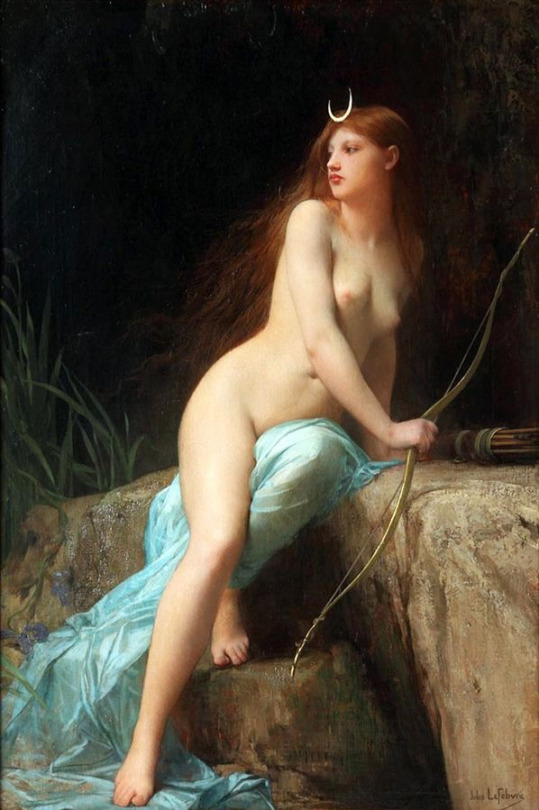
Jules Joseph Lefebvre (1836-1911) "Diana"
#paintings#art#artwork#mythological painting#roman mythology#jules joseph lefebvre#fine art#french artist#female portrait#portrait of a woman#female figure#red hair#diana goddess#goddess diana#1800s#19th century#aesthetic#aesthetics#1k#2k#3k#4k#5k
5K notes
·
View notes
Text

Apollo and Diana, an 1848 marble statue by American artist and sculptor Thomas Crawford.
This captures their essence quite well imo!
#artemis#goddess artemis#goddess diana#marble statue#marble sculpture#apollo#apollon deity#god apollo#greek gods#greek mythology#ancient greek#greek history#roman mythology#roman gods#roman history#rome#spqr#Thomas Crawford#Diana#theoi
513 notes
·
View notes
Text
Artemis Phosphorus (Bringer of Light) ✨️
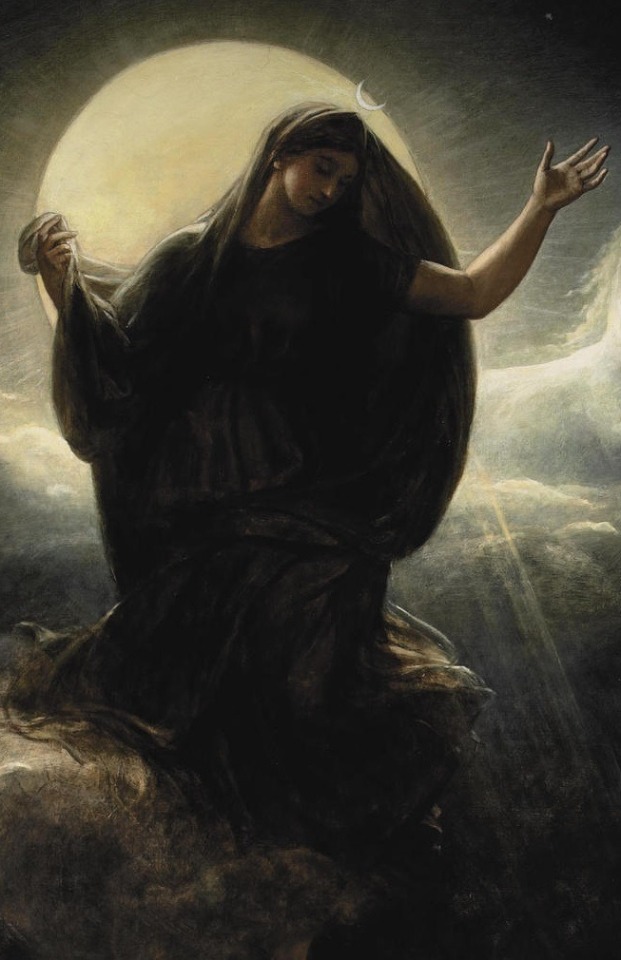
(Diana Awakening Apollo [1910] by Carl Bertling)
Callimachus refers to Artemis as “Queen” and asserts that when Artemis was a young girl sitting on her father Zeus’ knees, asking him to allow her to keep her maidenhood forever and receive her bow and arrows, she also asked him to be Phosphorus, or “Bringer of Light,” which became one of her many titles (Callimachus, Hymn 3.1). One of her most popular temples as “Bringer of Light” is at Messene in the sanctuary of Asclepius (Pausanias 4.31.10).
Zeus is more than delighted to give her all that she asks for: “three times ten cities and towers more than one live vouchsafe thee — three times ten cities that shall not note to glorify any other god but to glorify the only and be called of Artemis. And thou shall be Watcher over Streets and Harbors” (Callimachus, Hymn 3.28).
Thus, in addition to her being Phosphorus, she is also Enodia, “Protector of the Mariners.” Consequently, Artemis is not only “Saviour” through mercy — that is, people do not only pray to her for protection and peaceful death — but she is “Saviour” in a way that is omnipresent. As the “Bringer of Light,” her luminance literally saves ships, harbors, and all those who depend on these facilities to survive. In her role as Sôteira, Artemis inhabits the personal spaces of her community of worshipers.
As a goddess of mercy, she is invoked as Phôsphoros, meaning “Bringer of Light,” and she is often Hêmerasia or “She Who Soothes.” ... it is significant that her ritual worship expanded from “Huntress,” or goddess of wilderness, to the “Saviour” of her supplicants and the “Protector” of communities and cities.
- She Who Hunts: Artemis: The Goddess Who Changed the World by Carla Ionescu
#artemis#diana#Carla Ionescu#goddess artemis#artemis goddess#artemis devotion#artemis devotee#artemis deity#hellenic polytheism#hellenic pantheon#hellenic gods#hellenic community#hellenic pagan#hellenic paganism#hellenic polytheist#hellenic worship#goddess diana#diana goddess#diana deity
439 notes
·
View notes
Text
Nemoralia and the birthday of Goddess Diana

As I wasn't able to celebrate Nemoralia two days ago, I thought I'd make a post about it today. Nemoralia was a festival in honour of Goddess Diana. This festival was originally held at Diana's temple in Aricia, current day Nemi (50 minutes away from Rome by car).
May this informational post honor the goddess and help those that want to celebrate this festival.
August 13 - Diana's Dies Natalis
This was thought to be Diana's dies natalis (birthday) by members of the collegium of Diana and Antinous in Lanuvium.
Everyone took part in this festival though the main focus were women. As told by Plutarch, on this day, for reasons unknown nowadays, they washed their hair in a special ritual.
Enslaved people got this day off as they were under the protection of the goddess (worth to keep in mind that Diana's priest at Lake Nemi was always a runaway enslaved man). Male citizens and masters were able to participate in this festival but they were required to be on equal terms with women and enslaved people.
As this is one of the hottest days of the year, the celebrations started at night. Worshipers adorned not only their heads with flowers crowns, but also the heads of their dogs as they also took part in the celebration. Hunting or killing animals in any way was forbidden on this day. Horses were forbidden from entering this area.
At night, worshipers assembled at the Sanctuary and walked in a procession around Lake Nemi while holding candles or torches, similar to the ones Vestal Virgins carried. People wrote petitions on ribbons and tied them on tree branches and they also left votive offerings at the temple, especially related to part of the body in need of healing.
How to celebrate in current day
Make an offering to Diana. Some ideas are baking moon-shaped cakes, pouring wine, cutting a flock of your hair for her or lighting a special candle. You could also read a hymn in her honour.
Wash your hair or go to the hair salon to get a trim. Adorn it with flower crowns.
If you have a dog, pamper them!! Wash them, take them on a longer walk than usual, buy then special treats... The possibilities are endless.
Write your petitions in a ribbon and tie it in a tree branch. If you don't have any trees near you could also tie it to any plants you're growing at home or bury it in the ground.
Donate to good causes, foundations or shelters related to women, animals or those in need. The world really needs that right now.
If you are near Nemi, go to the ruins of the goddess' temple. People still give her flowers til this day. Also the council of Nemi celebrates Nemoralia since 2016, though I think this year was discontinued since I wasn't able to find any information about it.
The program is formed by different types of activities, from history or art lectures to guided tours or nature walks.


What's the actual date of Nemoralia?
There's a lot of confusion online about what the actual date of Nemoralia is, with some people saying it's only celebrated on the 13th, others saying it's on the 15th and others saying is a three day festival.
It's believed that at first it was celebrated on the full moon but during the Roman Republic it was set on August 13, as back then that's when the full moon happened. This has led modern scholars like Frazer to think that the festival may extended over a few days instead of just one.
So, when to celebrate? If you want to follow the Roman calendar, it should be on August 13. However, if you want to celebrate on a full moon like ancient worshipers would have, then it depends on the year (in 2024 it would be on August 19).
Additionally, since it's believed Nemoralia became the Assumption of Mary through syncretism with Catholicism, you may want to choose August 15 to celebrate, because if you live in a Catholic country or canton you'll most likely get a day off from work - which means more time to celebrate!
May Dea Diana bless you all!
#paganblr#paganism#witchblr#witchcraft#polytheism#polytheist#Diana#dea Diana#goddess diana#diana worship#diana devotee#roman polytheism#roman paganism#rompol#helpol
37 notes
·
View notes
Text

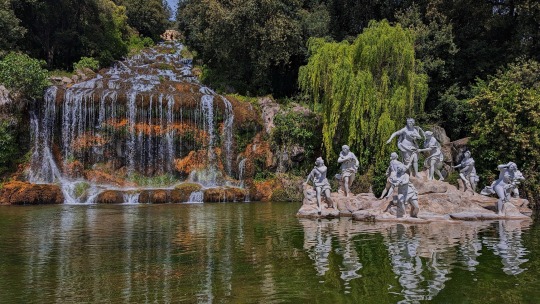
Actaeon transformed into a stag by Diana for daring to peek on her while she was bathing (Ovid, Metamorphoses)
#greek mythology#mythology#goddess diana#greek gods#sculpture#neoclassic#neoclassical#diana#garden#gardencore#royal palace#cottage garden#fountain#waterfall#naturecore#natureporn#carving#ancient greek#fairy#fairy tales#fairycore#dreamcore#cottagecore#cottage aesthetic#aesthetic#fairy cottage#photoblog#italycore#diana and actaeon#reggia di caserta
63 notes
·
View notes
Text
EARTH GODDESS / HORNED GOD
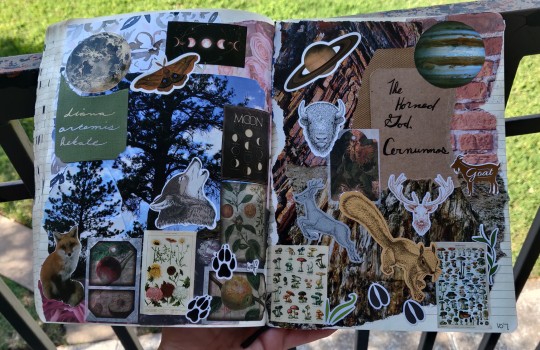

altars to-go
#this is a page from my own personal#grimoire#digital grimoire#witchcraft#witchblr#witch#baby witch#hekate#artemis#diana#goddess#goddess diana#the horned god#cernunnos#diety#altar#book of shadows#witchling#collage art#collage#craftblr#moon#moon phases#jupiter#saturn#upg#roaenpost
114 notes
·
View notes
Text
@cocorrina.co
Shoot for the Stars ✨
Aim for the Moon 🌙
18 notes
·
View notes
Text

Diana of Versailles, marble statue of the Roman goddess Diana. Also known as Artemis, Goddess of the Hunt (Greek mythology). Photo by Margot Noyelle.
#mine#uploads#diana#goddess diana#artemis#goddess artemis#sculpture#roman mythology#greek mythology#the louvre#r
253 notes
·
View notes
Text

Who is Artemis?
In Greek mythology, Artemis is the goddess of the hunt, wild animals, nature, vegetation, chastity, childbirth, and care of children. She is the daughter of Zeus and Leto, and the twin sister of Apollo.
Here are some other facts about Artemis:
Symbols
Artemis' symbols include the bow and arrow, the hunting dog, the stag, and the moon.
Patron
Artemis was the patron of girls and young women, and a protectress during childbirth.
Roman equivalent
Artemis' Roman equivalent is Diana.
Temple
Artemis' most famous cult site was the Temple of Artemis at Ephesus, one of the Seven Wonders of the Ancient World.
Character
Artemis was unmarried and never had children. She asked her father for permission to remain a virgin.
Hunting
Artemis was a fierce and skilled hunter, and she protected game, especially the young.
Festivals
Artemis was worshipped at festivals, which often included celebrations by girls and women.
🌗🌗🌗🌓🌓🌓
#pagan#paganblr#paganism#witchblr#witchcraft#witch#witch community#moon#half moon#ai search#ai artwork#trivia#goddess#greek goddess#greek gods#greek mythology#artemis#goddess artemis#bomwhoarethemoongoddesses#goddess diana#diana
14 notes
·
View notes
Text

#diana#goddess#art#huntress#goddess diana#artemis#goddess art#deity#deities#greek mythology#roman mythology#goddess statue#goddess energy#divine feminine#sacred feminine#bow and arrow#moon#moon goddess#goddess artemis
17 notes
·
View notes
Text
my girl❤️🔥🏹🌙

“The Goddess Diana with a Lion” 1848-1925 Angelo Von Courten. oil on canvas.

“Diana Cacciatrice (Diana the Huntress)” 1658 by Guercino. oil on canvas.

“Diana” 1879 by Jules Joseph Lefebvre. oil on panel.
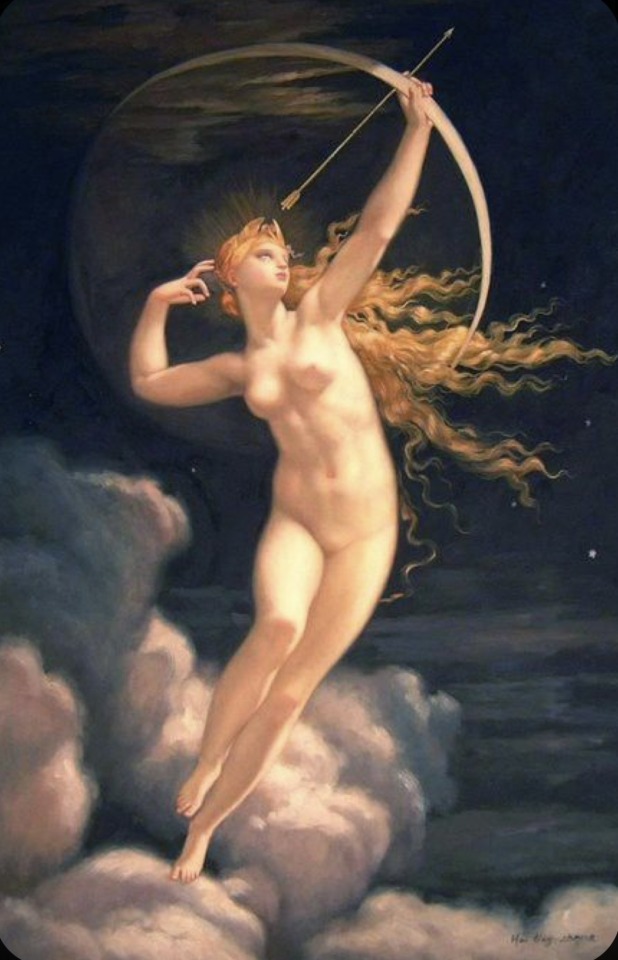
“Selene” 1874 by Jules Louis Machard. oil on canvas
#diana#artemis#selene#goddess#goddess diana#greek gods#greek goddess#greek mythology#art#oil painting#oil on canvas#oil on panel
63 notes
·
View notes
Text
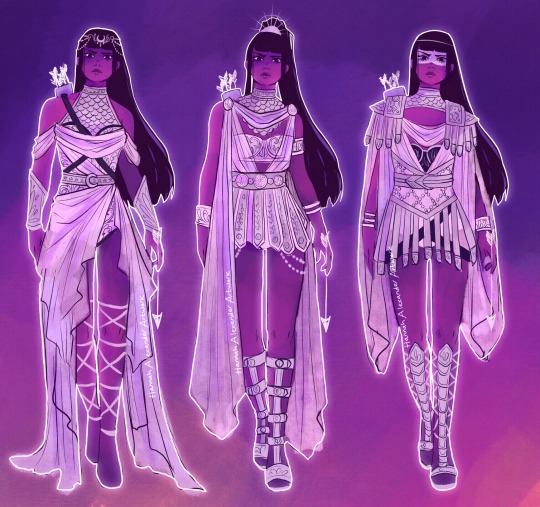
Things I dislike: Lore Olympus.
Things I like: This fan depiction of Artemis from Lore Olympus.
The sauce is Artist Hannah Alexander on X… This is an amazing work so please show them some love!

#artemis#ancient greece#greek mythology#greek gods#lore olympus#ancient rome#roman gods#roman mythology#goddess diana#goddess artemis#theoi
89 notes
·
View notes
Text
What is 'Charisteria'?
The Festival of Lady Artemis + Lord Ares

(Photo credit: BBC)
***tw: animal harm and animal sacrifice***
One of the more popular festivals to Artemis is the Charisteria (“thanksgiving”), which took place on the sixth day of Boedromion (September).
According to Herodotus, there was already a long-standing, ancient celebration on this day for the goddess Artemis (and her brother Apollo), however, at some later time, the festival was enlarged and became associated with the Battle of Marathon.
The Greeks honoured their victory over the Persians by celebrating the goddess who brought them victory...
...Miltiades, an Athenian warrior who is often credited with devising the tactics that defeated the Persians at the Battle of Marathon, is said to have been the first to offer sacrifice to Artemis on the day of her ancient feast. Pausanias tells us that, as part of this same festival, 500 goats were sacrificed to Artemis Agrotera and Ares Enyalios.
The goats were taken into the temple on Ilissos in a ceremonial procession and sacrificed collectively. It was said that each goat was meant to represent a fallen Persian soldier, but that so many Persians had died in the battle that doing so would have culled the entire goat population.
What makes this festival especially interesting is that the sacrifices were offered at a temple of Artemis and Ares, which is a unique collaboration by these two divinities and speaks widely to their elated position in battle worship and war.
- She Who Hunts: Artemis: The Goddess Who Changed the World by Carla Ionescu
#tw: animal harm#artemis#Carla Ionescu#artemis deity#goddess artemis#artemis goddess#artemis devotion#artemis devotee#diana#goddess diana#diana goddess#diana deity#hellenic polytheism#helpol#hellenic community#hellenic pagan#hellenic gods#hellenic pantheon#hellenic paganism#hellenic polytheist#hellenic worship#animal sacrifice#tw: animal sacrifice
129 notes
·
View notes
Text


Mais um trabalho feito da faculdade. Dessa vez é a releitura de uma estátua chamada "Fountain of Diane" de Jean Goujon.
•
Another project done at college. This time it's a reinterpretation of a statue called "Fountain of Diane" by Jean Goujon.
#art#art drawing#my art <3#goddess diana#releitura#greek mythology#roman mythology#fanart#artemis#goddess#artemis goddess
11 notes
·
View notes



